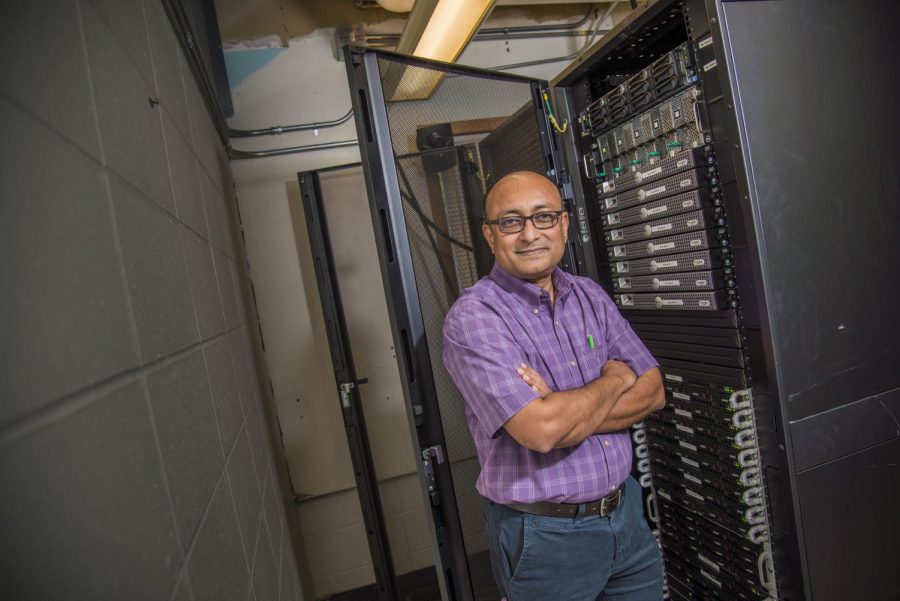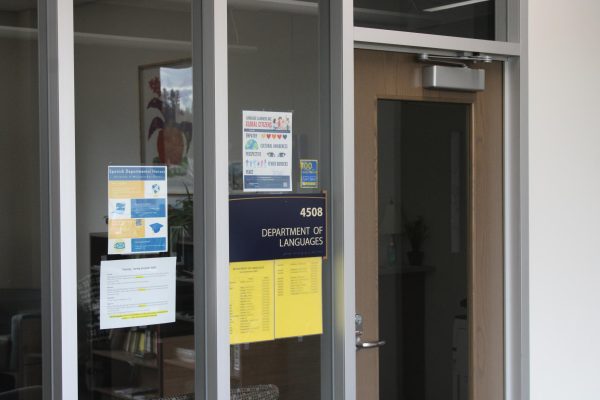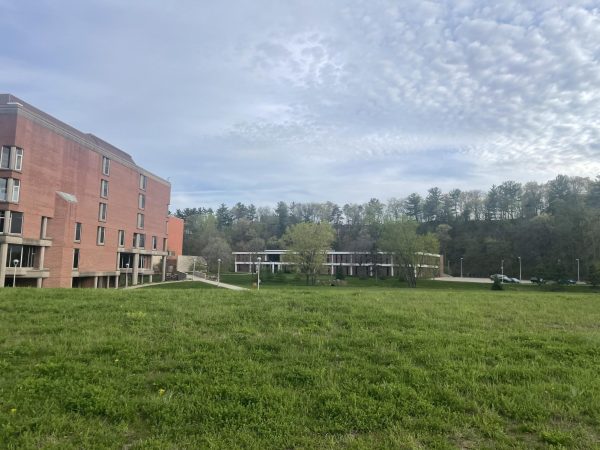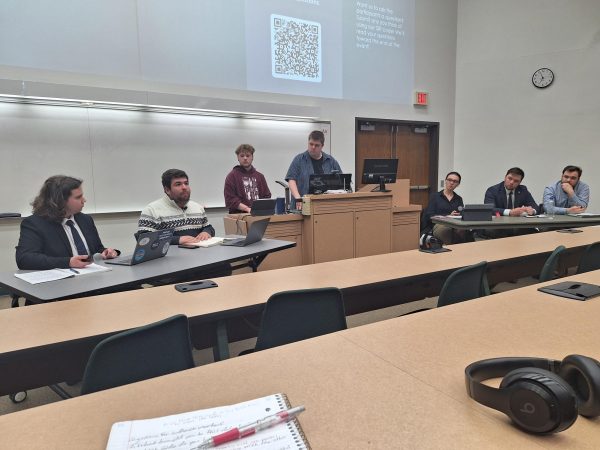Grant boosts supercomputing
UW-Eau Claire receives a grant from the National Science Foundation
Photo by Submitted Photo
Bhattacharyay stands by the current Blugold Supercomputing Cluster.
UW- Eau Claire is receiving a $350,000 grant that is aimed entirely to improve the Blugold Supercomputing Cluster, currently called the BGSC. The new and improved high-performance computing cluster will be called the BGSC2.
“(The BGSC) has become severely limited in its capabilities,” Sudeep Bhattacharyay, the principal investigator for the award, said. “And this new HPC, which we call BGSC2, will enable important discovery and student experiential learning into the future.”
The current supercomputing cluster has been a part of 29 publications since 2012, according to the university’s website, ranging anywhere from protein structures to quantum-chemical calculations.
The BGSC faculty come from six academic departments: biology, chemistry, geology, material science, physics and learning and technology services. There are 16 faculty involved in total.
According to Julie Poquette, a member of the UW-Eau Claire Integrated Marketing and Communications team, the grant will support the purchase of a hybrid graphical processing unit and central processing unit.
According to techterms.com, a GPU is a system dedicated to graphics processing — specifically 3D graphics — which are made up of polygons. The first GPU was released on Aug. 31, 1999 by NVIDIA, dubbed the GeForce 256. It was capable of processing ten million polygons per second.
For reference, the newest and best stand-alone NVIDIA GPU — the Tesla p100 — processes 9.3 Teraflops per second, or a maximum of 3.1 trillion polygons per second, which is 310,000 times more powerful than the GeForce 256.
According to Justin McElroy from Polygon, ‘flops’ stands for floating-point operations per second, which is a number with a decimal point in it. It is these decimal points that make it more difficult for computing compared to integers.
Techterms also explains that a CPU is the part that processes instructions and directs inputs and outputs to the correct computational hardware. A CPU can have up to eight processing cores and a server can have multiple CPUs.
Currently, the BGSC has 364 cores, which, according to Ying Ma, associate professor of materials science and engineering, has less than one-third of the processing power that is currently needed from the cluster. Ma said the new cluster will double its current power which, while still not enough, will introduce large-scale parallel computing, which the current cluster cannot do.
Because of the grant, there are propositions to bring computing to the local community, according to Ma.
Ma said it will be open to all students, so they can get hands-on experience through classroom projects or collaborative research, which he says is rare for students at a campus the size of UW-Eau Claire.
Seward can be reached at [email protected].

Will Seward is a fourth-year creative writing major, minoring in physics and chemistry. Alongside The Spectator, he is also a co-host for Blugold Radio Sunday's shows: Blugold Literary Broadcast and How'd You End Up Here? Outside of these roles, he enjoys typewriters, photography and petting dogs.











